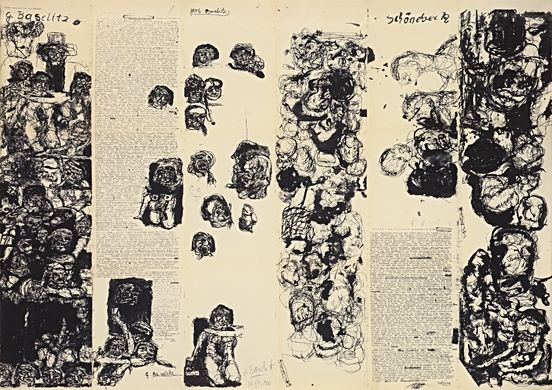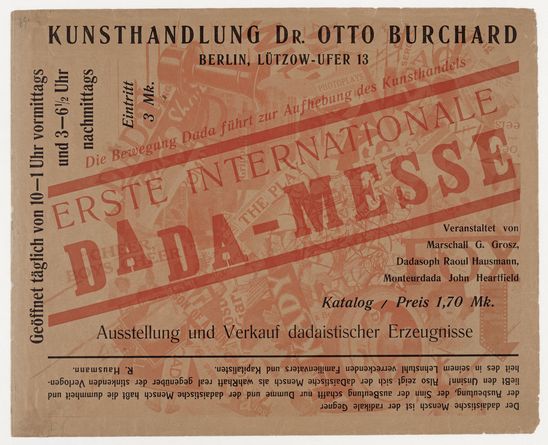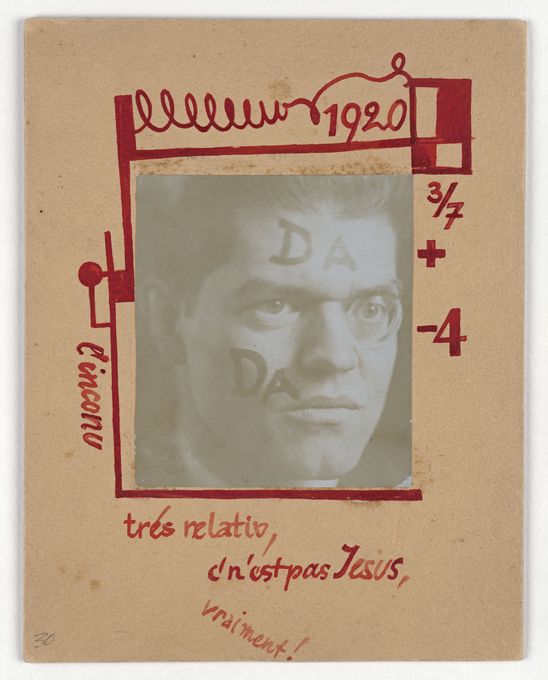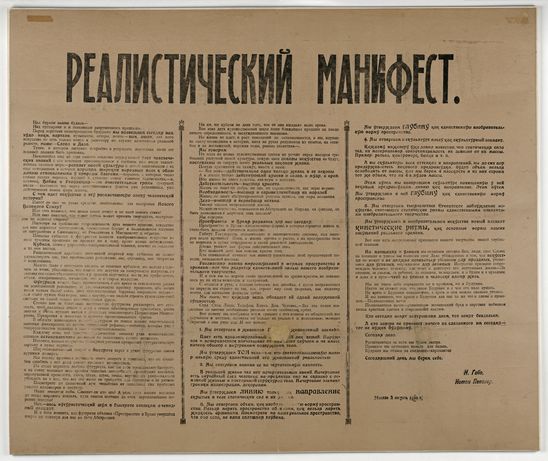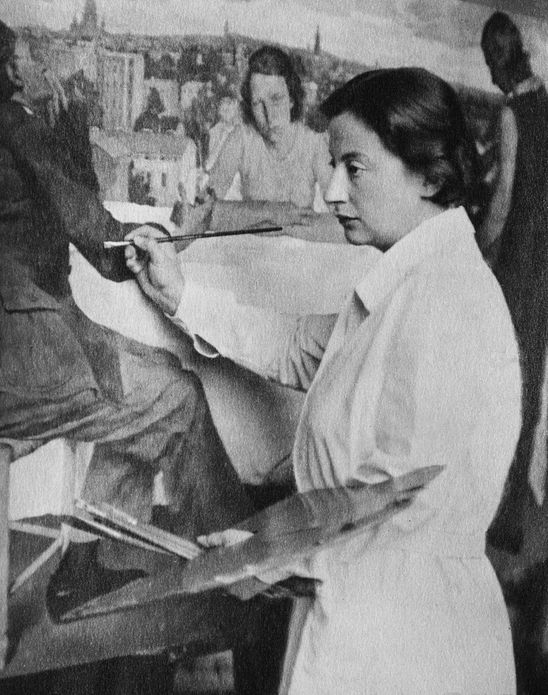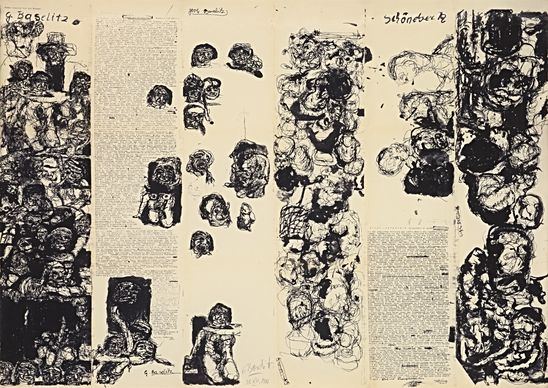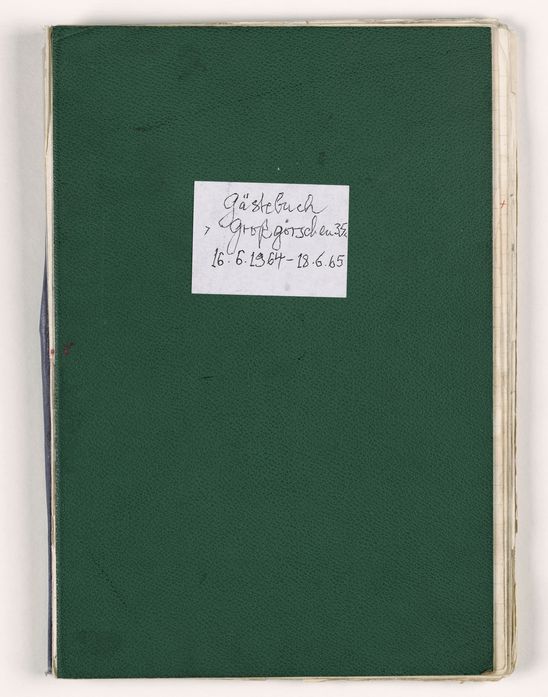“We wanted to thoroughly stir up all that harmony mush in Berlin where everything was so bland and torpid.”
Georg Baselitz
In the early 1960s, hardly any gallery in West Berlin was showing contemporary work, and certainly no representational painting. The fashion was for Abstract Art and Art Informel. The young students Georg Baselitz (*1938) and Eugen Schönebeck (*1936) had no opportunity to show their wild, figurative works, and so they decided to take matters into their own hands. They staged their first joint exhibition in 1961 in a block of flats due for demolition – a ruin as a pop-up gallery in the heart of Wilmersdorf. They even launched a publicity campaign: they wrote their “Pandemonic Manifesto”, an angry polemic, and distributed it around the city. They declared ugliness, obscenity and blasphemy to be the key themes in a new kind of figurative painting and they even produced two versions of their pamphlet. “We wanted to thoroughly stir up all that harmony mush in Berlin where everything was so bland and torpid,” Baselitz later said in an interview.
Georg Baselitz and Eugen Schönebeck
Pandemonic Manifesto
1962
Manuscripts
Paper, typewritten, ink drawings
88 x 124 cm
Acquired with budgetary funding from Berlinische Galerie 1999
